Cleaning grout on marble tiles can seem like a daunting task, but with the right approach and tools, it can be accomplished effectively and safely. Marble, being a naturally porous stone, requires special care to avoid damage during the cleaning process.
This guide aims to provide homeowners with a step-by-step method to clean grout on marble tiles, ensuring the beauty and longevity of their marble surfaces. Whether in your bathroom, kitchen, or entryway, maintaining clean grout is essential for both aesthetics and hygiene.
By following these tips, you can keep your marble tiles looking pristine and welcoming.
Marble’s delicate nature cannot be overstated; it demands careful handling, especially during the cleaning process. The selection of appropriate cleaning methods and products is crucial to prevent etching or discoloration, preserving the stone’s elegance and durability.
Materials Needed
- Gentle cleaning solution (pH-neutral)
- Soft-bristle brush or toothbrush
- Microfiber cloth
- Baking soda (for tougher stains)
- Water
- Sealant (optional for after-cleaning protection)
Preparation Steps
Remove any loose debris and dirt from the surface
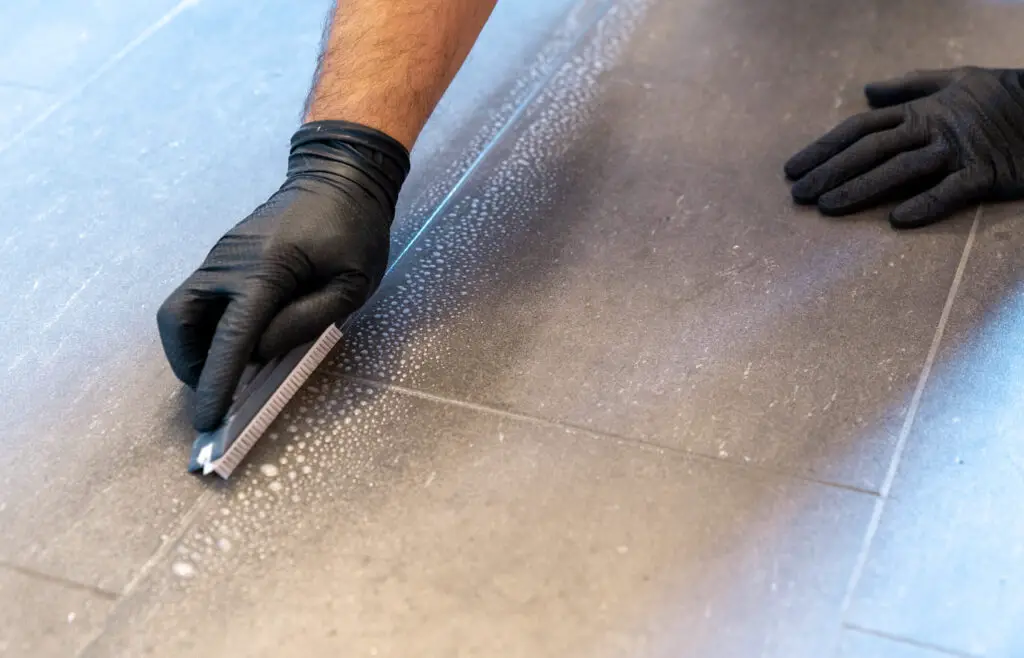
Before applying any cleaning solution, it’s important to remove any loose debris and dirt from the surface of the marble tiles. This can be done using a soft, dry microfiber cloth or a very gentle vacuum cleaner with a soft brush attachment. Carefully sweep or vacuum the surface to ensure that all loose particles are removed.
This step is crucial to prevent scratching the marble when scrubbing the grout. Ensuring the surface is free from loose debris will make the cleaning process more efficient and protect the integrity of the marble.
Create a cleaning solution by diluting a gentle, pH-neutral cleaner
To clean the grout without harming the marble tiles, prepare a mild cleaning solution. Mix a gentle, pH-neutral cleaner with water, following the product’s instructions for the correct ratio.
It is essential to use a cleaner that is safe for marble to prevent damage to the tiles. If unsure, you can also make a simple solution by mixing a few drops of mild dish soap with warm water.
Stir the solution gently to ensure it is well combined. This homemade solution is effective for general grout cleaning and is gentle enough to protect the marble’s surface integrity.
Cleaning Process
Apply the Cleaning Solution to the Grout Lines
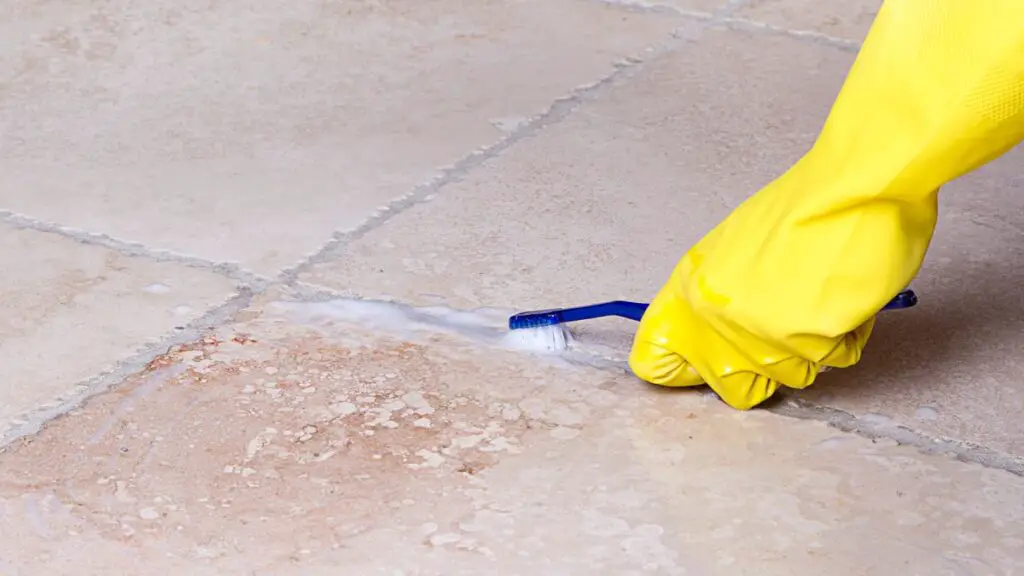
After preparing your gentle cleaning solution, dip a soft-bristle brush or an old toothbrush into the mixture. Carefully apply the solution to the grout lines, ensuring not to oversaturate the marble tiles.
Use gentle, circular motions to scrub the grout, focusing on one small section at a time to maintain control and precision. This methodical approach helps to avoid spreading the cleaner too broadly over the marble surface, which could potentially cause damage.
Rinse the brush frequently in clean water to avoid reapplying any dirt or debris back onto the grout.
This targeted application helps cleanse the grout effectively while preserving the marble’s natural beauty and integrity.
Techniques for Gentle Scrubbing
To effectively remove dirt and grime from grout lines without scratching the marble tiles, it’s crucial to use a soft-bristle brush with care. Begin by lightly dipping the brush into the prepared cleaning solution, ensuring it’s moist but not dripping wet.
Start scrubbing at one end of a grout line, using gentle, circular motions to lift the dirt effectively. The key is to apply minimal pressure to avoid any potential damage to the marble surface.
If the dirt is stubborn, allow the cleaning solution to sit for a few minutes to loosen the grime before attempting to scrub again. Always keep the brush’s bristles flat against the grout to avoid accidental scratches on the marble tiles.
After scrubbing, wipe the area with a soft, damp cloth to remove any remaining cleaner and loosened dirt.
Tackling Tougher Stains with Baking Soda Paste
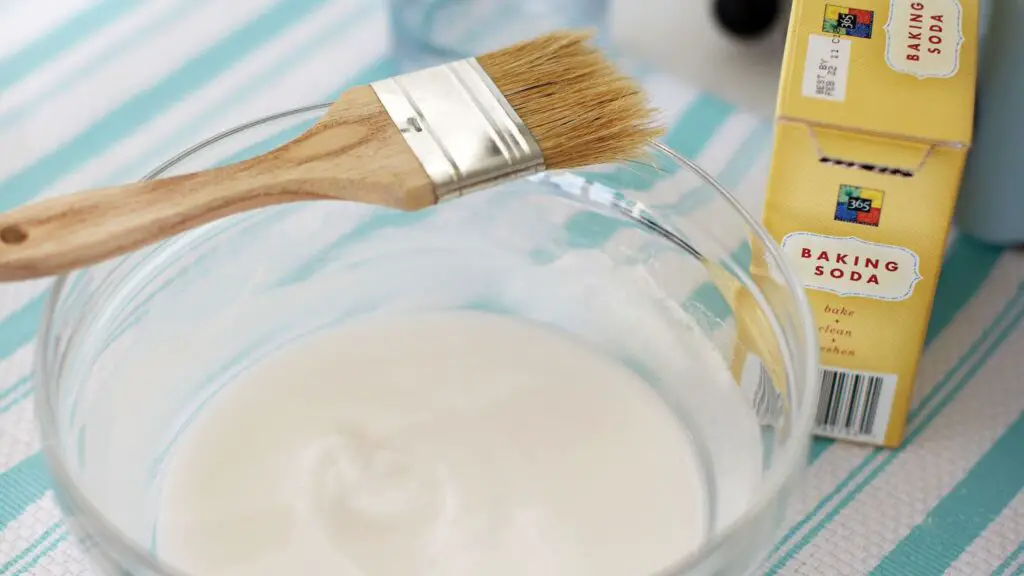
When faced with more stubborn stains that resist initial cleaning efforts, creating a baking soda paste offers a highly effective solution. To prepare this potent cleaning agent, mix three parts baking soda with one part water, adjusting the quantities as needed to form a thick, spreadable paste.
Apply this paste directly onto the stained areas of the grout, spreading it evenly with a spatula or an old toothbrush.
Allow the paste to sit on the stain for about 10 to 15 minutes, giving it ample time to break down the stain’s molecules.
After the waiting period, re-wet the soft-bristle brush and use gentle circular motions to scrub the treated area. The abrasive nature of baking soda works excellently to dislodge the tougher stains without causing harm to the marble tiles.
For extremely stubborn stains, you may need to let the paste sit for a longer duration, potentially up to an hour, and apply a bit more elbow grease during the scrubbing process.
Once the stain has lifted, remove any residual baking soda paste with a clean, damp cloth. It’s important to thoroughly rinse the area with water to ensure no baking soda remains, as leftover residue can attract more dirt and grime.
Repeat the process if necessary, but always prioritize gentle handling to maintain the marble’s pristine condition.
Rinsing and Drying
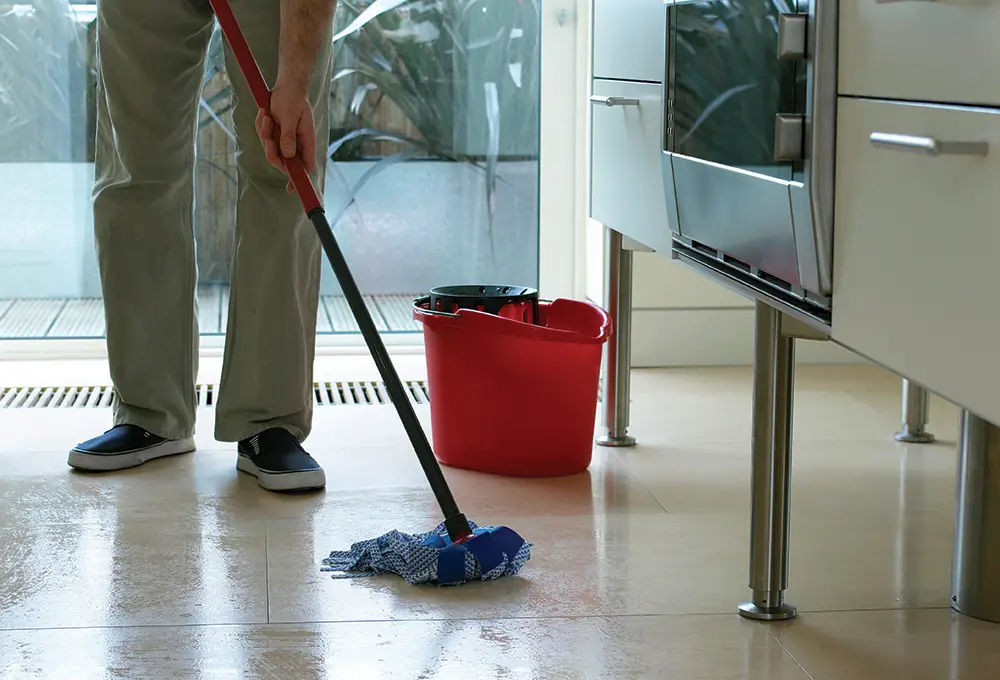
Ensuring a Spotless Rinse
After successfully treating the area with the baking soda paste, it’s crucial to rinse off any remaining cleaning solution thoroughly. Begin by gently pouring lukewarm water over the cleaned surface, taking care not to flood the marble tiles.
Use a soft, clean sponge or cloth, dampened with water, to softly wipe away any traces of baking soda or cleaning agent. It’s essential to frequently rinse the sponge or cloth to prevent redistributing the residues back onto the tile.
Continue this process, using clean water each time, until the surface is free of any cleaning solution.
Avoiding Water Spots Through Proper Drying
Once the marble surface is thoroughly rinsed, preventing water spots during the drying process is paramount for maintaining its luxurious appearance. Begin by gently patting the area dry with a soft, lint-free cloth or towel.
Avoid using abrasive fabrics or vigorous rubbing motions that might scratch the marble’s delicate surface. For best results, consider using a microfiber cloth, known for its super absorbent properties and softness, ensuring that no moisture is left behind.
If available, a clean squeegee can also be employed to remove excess water gently, reducing drying time and minimizing the risk of water spots.
Finally, allow the area to air-dry completely, ensuring it is free from any moisture, which could lead to mildew or other water-related damage over time.
Related Topics:
Maintenance Tips
Regular Cleaning to Prevent Grout Discoloration
For maintaining the aesthetic appeal of your marble tiles and preventing grout discoloration, regular cleaning is essential. It is advisable to use a pH-neutral cleaner designed specifically for marble, as harsh chemicals can deteriorate the grout and marble surface over time.
Gently mopping the surface with this solution at least once a week can remove dirt and grime buildup before it settles.
Additionally, promptly addressing spills and avoiding acidic cleaning agents will further protect your tiles and grout from discoloration and damage.
Utilizing Sealants for Long-term Protection
To safeguard grout and marble surfaces against future dirt accumulation and staining, applying a high-quality sealant is highly recommended.
Sealants form a protective barrier on the surface, repelling water, and oil-based substances, thus preventing them from penetrating the porous material. It’s crucial to select a sealant that is compatible with marble, as the wrong type could cause discoloration or damage.
For optimal results, the sealant should be applied following the manufacturer’s instructions, typically every 6 to 12 months.
Warnings and Cautions
A crucial aspect of marble care involves being mindful of common mistakes. One significant error is the use of acidic cleaners, including vinegar and lemon-based solutions, which can etch the marble surface, leaving permanent marks. Additionally, abrasive cleaning tools can scratch and damage both the marble and grout.
It’s also imperative to underscore the importance of testing any cleaning solution on a small, inconspicuous area before applying it to larger sections.
This precautionary step helps ensure the cleaner is safe for use on your specific marble, preventing potential damage that could be both unsightly and costly to remediate.
Conclusion
Cleaning grout on marble tiles requires a delicate balance between thoroughness and gentleness. By focusing on the appropriate selection of materials specifically, a pH-neutral cleaner, a soft-bristle brush, and possibly, a gentle baking soda paste for tougher stains homeowners can effectively maintain the cleanliness and integrity of their marble surfaces.
Regular maintenance, combined with the strategic use of sealants, plays a pivotal role in ensuring the longevity and aesthetic appeal of marble tiles.
It is essential to remember that marble, while beautiful and durable, demands careful handling to prevent damage during the cleaning process. Avoiding common pitfalls such as the use of acidic cleaners and abrasive tools will preserve your marble’s pristine appearance.
With the right approach, keeping your marble tiles and grout clean does not have to be a daunting task; rather, it can be a manageable part of your home’s regular maintenance routine, ensuring your surfaces remain pristine and welcoming for years to come.
FAQs
Can vinegar be used as a cleaning agent for marble tiles?
No, vinegar should not be used on marble tiles. Vinegar is acidic and can etch the marble surface, causing dull spots known as etch marks. It’s essential to stick with pH-neutral cleaners designed for marble to avoid damage.
How often should marble tiles and grout be sealed?
Marble tiles and grout should generally be sealed at least once a year. However, the exact frequency depends on the amount of foot traffic and usage the area receives. High-traffic areas may require more frequent sealing to maintain protection against stains and damage.
Is it safe to use a steam cleaner on marble tiles for deep cleaning?
Using a steam cleaner on marble tiles is not recommended. The intense heat and moisture from steam cleaning can potentially cause harm to the marble, including cracking or other forms of damage. Stick to a gentle, damp mopping technique for regular maintenance and a pH-neutral cleaner for more thorough cleanings.
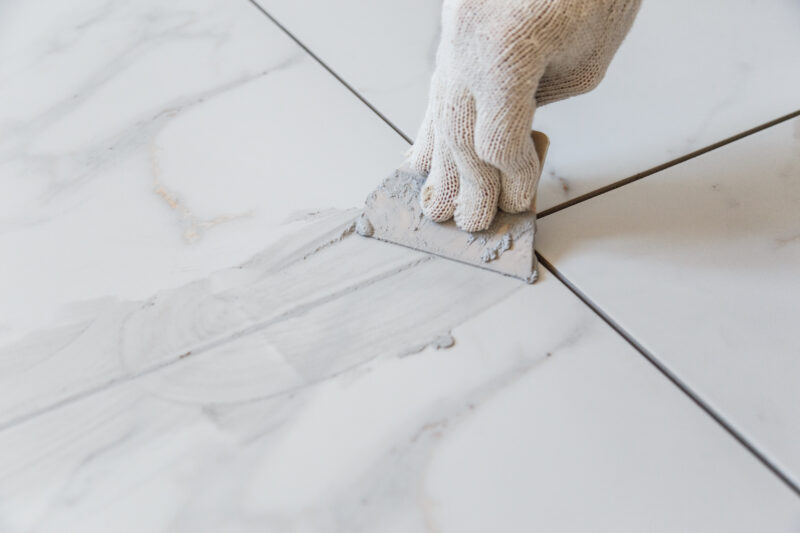
1 thought on “How To Clean Grout On Marble Tiles”